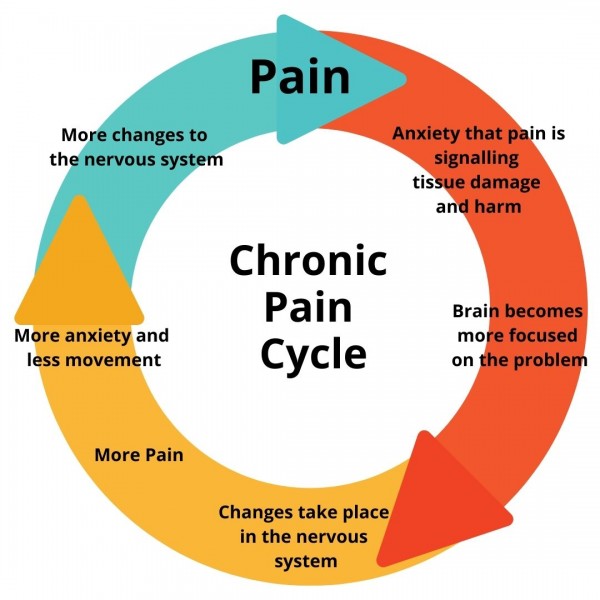The Role of Physical Therapy in Chronic Pain Management
What is Pain?
Pain is an unpleasant sensation interpreted by the brain. It can be constant or intermittent, mild or debilitating, and may be described as aching, throbbing, stabbing, shooting, burning, and more.
There are 2 categories of pain: acute and chronic.
Acute pain is caused by a specific disease or injury, is short-lived, and serves a biological purpose in alerting you to actual or potential tissue damage (i.e. breaking your ankle).
On the other hand, chronic pain is often considered a diseased state where the brain has become hypersensitive to even slight touch or movement signals. It typically persists past the time of expected normal healing (3-6+ months), and can also progress from psychological states (i.e. . In these instances, pain doesn’t necessarily mean damage.
What is the Pain Cycle?
Following the expected healing time of tissues, chronic pain can proliferate through psychological and neural pathways. After healing of an initial injury, the brain can “learn” to be in pain. Any sensation or movement from the previously injured area can cause anxiety that these sensations are causing damage to body tissues. The brain then becomes hyper-aware of this area and changes in neural (brain) pathways can occur that cause the brain to interpret more pain (even in the absence of an unpleasant sensation). More pain causes further anxiety and less movement (progressive deconditioning), leading to further detrimental nervous system changes. In short, pathways in the brain can rewire to become more sensitive to sensation or movement.
How to Break the Pain Cycle:
● Knowledge: Understanding that pain doesn’t always mean damage, and structural abnormalities are not always matched to pain intensity (i.e. a herniated disk can be painless). Recognize that fears, misconceptions, and anxiety about pain may be making the problem worse.
● Move: Yes, we’re talking about Physical Therapy (PT)! The role of physical activity in breaking the pain cycle can not be emphasized enough. Avoiding physical activity can cause muscles to weaken and neural pathways to mal-adapt. A PT can introduce and encourage safe movements that if kept up with, can strengthen surrounding muscles and rewire the brain into understanding that movement or other sensations do not equal pain or damage. Exercise is the key for reversing deep-rooted chronic pain pathways in the brain.
● Others: Cognitive behavioral therapy (aimed at changing mal-adaptive thoughts or behaviors), meditation, stress reduction, adequate sleep, and more.






